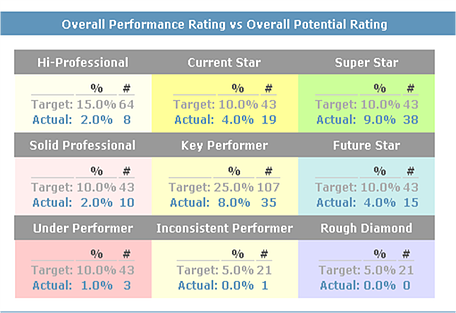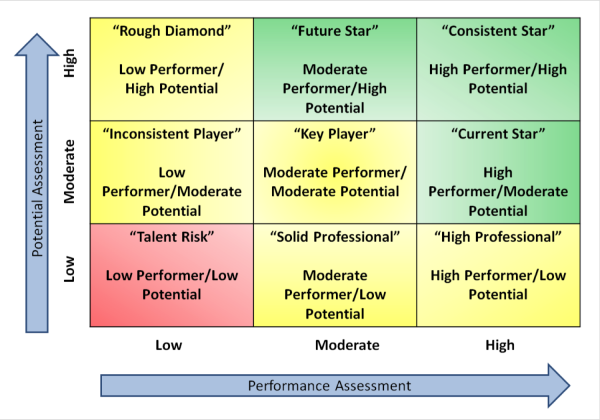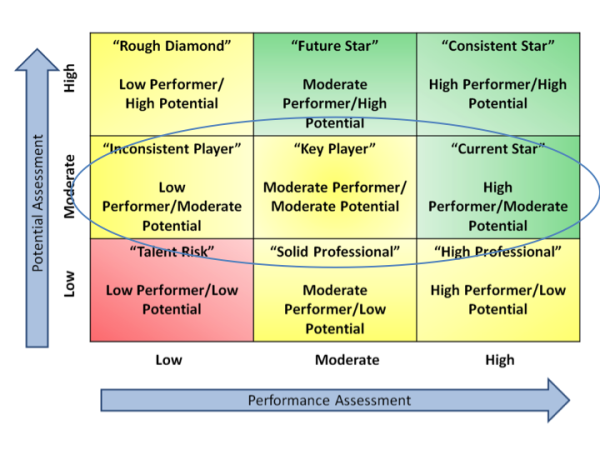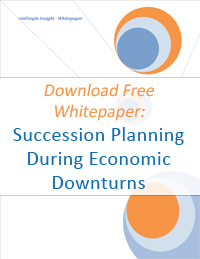Succession Planning: Living the 9 Box Dream
 Our goals are ambitious. We envision choosing the salmon but substitute the steak; we aim for the bubble bath but settle for the shower; we even think someday we might make it to Inbox = 0. The truth is, everyday just doesn’t look the way it does in our dreams. That’s not to say we never meet our goals. On the contrary, our objectives are quite often met when we have a realistic target in mind and a specific path for achievement.
Our goals are ambitious. We envision choosing the salmon but substitute the steak; we aim for the bubble bath but settle for the shower; we even think someday we might make it to Inbox = 0. The truth is, everyday just doesn’t look the way it does in our dreams. That’s not to say we never meet our goals. On the contrary, our objectives are quite often met when we have a realistic target in mind and a specific path for achievement.
This is often the case with the Succession Planning process. Everyone has heard of it, many want it, and most are not quite sure what to do with it when they get it. We have an idea of what it could be though. When that new senior position opens up, we dream of a Siri-like assistant who will present us with 3 potential candidates based upon past leadership experience, top performance, career trajectory and geographic considerations. Although this is not out of the realm of possibility, like losing the last 10 pounds, it’s going to take some effort to live the dream.
Getting started with Succession Planning is often best realized as a pilot process for particular pockets of the organization who are ready for such an initiative, or simply focusing the effort on the top leadership levels. At the outset, Human Resources should begin by building a talent profile for each employee. This is to be completed by both the employee and his/her manager and should pull-in other sources of data like performance, competency and engagement ratings. Learn more about getting started with Succession Planning: Make the First Move in Succession Planning.
When you ask employee’s to complete their talent profile, you are likely to end up with something resembling their Linkedin - a list of tenure and experience mixed in with a healthy dose of self and others’ promotion. This is not all that surprising given that social networking has taught us to brand ourselves. So, for better or worse, all of our “profiles” now seem to have this slant -- somewhere between real and aspirational. Quite simply, they are how we would like to be perceived. When employee’s are asked to rate their performance for Succession Planning purposes, you can expect a bit of bias to creep in.
You are in the same predicament when managers are asked to make ratings of performance and potential in the Succession Planning. A manager who wants to be perceived as a great leader, of a high-performing team, and one who leads with an eye towards promoting those below him when he gets his own corner office with virtual option on Fridays. Once again, you can expect such motivations to introduce some error into the talent assessment process.
Stomp Out Inherent Bias in the 9 Box
 Now let’s pause for a minute and think about what all of this is going to do to your 9 Box Talent Grid. In all likelihood, you will have an unhealthy dose of “Current Stars” and “Future Stars”mixed in with a sprinkling of “Super Stars” (see graphic). Luckily, your viaPeople Industrial Organizational Psychologist has advised you to set target percentages in your use of the 9 box and this sticky situation has been thwarted.
Now let’s pause for a minute and think about what all of this is going to do to your 9 Box Talent Grid. In all likelihood, you will have an unhealthy dose of “Current Stars” and “Future Stars”mixed in with a sprinkling of “Super Stars” (see graphic). Luckily, your viaPeople Industrial Organizational Psychologist has advised you to set target percentages in your use of the 9 box and this sticky situation has been thwarted.
Setting target percentages in the use of the 9 box provides guidance and structure for managers. It ensures managers check their own ratings and align each employee’s performance and potential with the appropriate pre-defined category. Further, target percentages require managers to make the tough decisions that will differentiate individuals based on their true performance/potential. Succession Planning technology can systematically require a certain percentage of their team to be allocated to the specific pre-defined categories.
Helping managers understand the category definitions and what performance/potential looks like in each of the 9 box categories is critical to establishing their buy-in and ensuring effective ratings. Further, communicating the appropriate follow-up measures after the process is important to their understanding of how Succession Planning is to be used in the organization. For example, will "Under Performers" be terminated or given a 90-day performance plan? How will Super Stars be challenged with stretch opportunities and mentor assignments? What recognition should be provided to the key performing majority, as important contributors to the organization?
Once your organization has a healthy 9 box talent grid, you can most effectivly use your Succession Planning software to form a much more complete picture of your talent pool. Analyzing talent gaps, matching talent to opportunities that will provide the best fit, and creating high-potential development tools are just some of the options you will have in your Succession Planning dreamworld. Learn more about using the 9 box in the Succession Planning process: Power Saw or Utility Knife: What Kind of Tool is Your 9 Box?
How have you used target percentages in your 9 box? Share your comments and success stories with us.
Share this
You May Also Like
These Related Stories

Power Saw or Utility Knife: What kind of tool is your 9 Box?

Limited Potential Does Not Limit Options - Use the 9 Box to Develop Talent in Succession Planning


